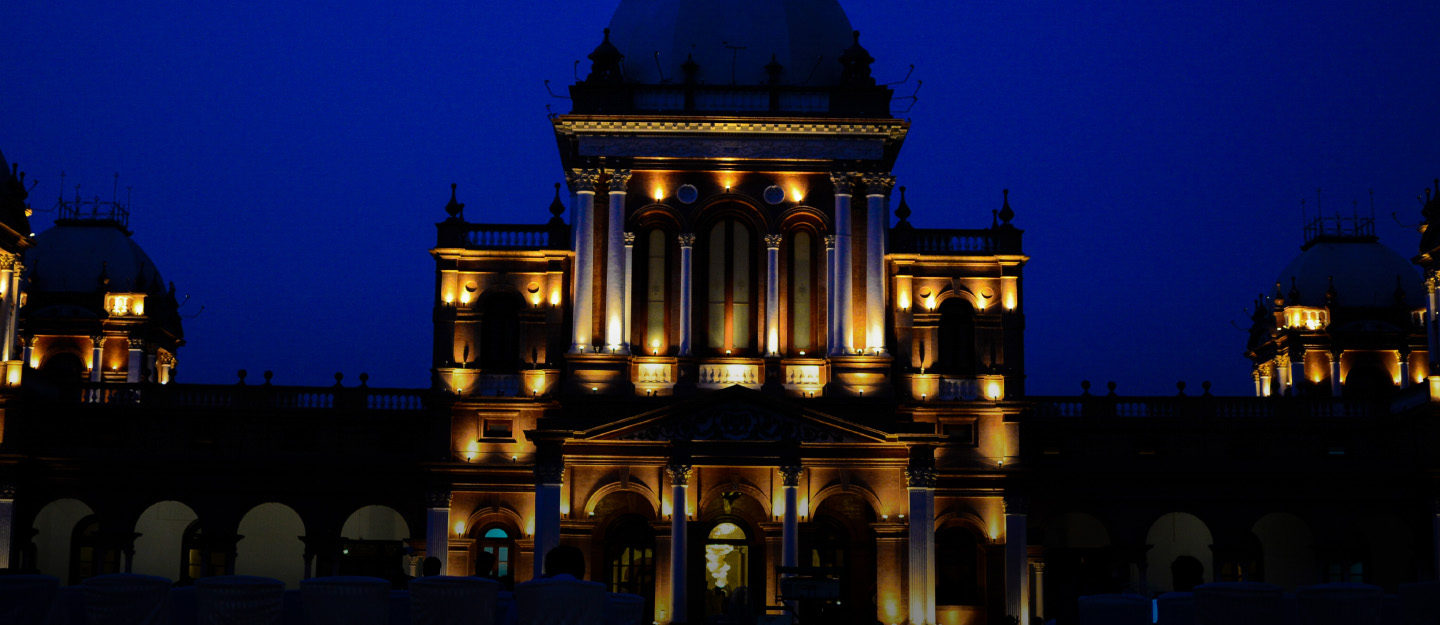If you’re a history buff or have an interest in old and modern architecture, you need to add the once-princely state of Bahawalpur to your travel bucket list. Located at a 3-hour drive from Lahore, this historic city is known for the magnificent Cholistan Desert and other stunning palaces. Among them, Noor Mahal certainly stands out as the most impressive reminder of the opulence of the royal family of Bahawalpur.
Also known as the ‘Palace of Lights,’ the grandeur of Noor Mahal has made it one of the top tourist attractions in Bahawalpur. Although it is currently being managed by the Pakistan Army, this grand Italian-style palace is open to the public between 9:00 am and 10:00 pm throughout the week. It also includes a museum and a well-manicured public park.
Unfortunately, despite its breath-taking architecture and luxurious interior, Noor Mahal remains one of the hidden gems of Punjab – a region with an extremely rich cultural history that dates back centuries.
Let’s take a look at some more facts about one of the most awe-inspiring royal palaces in Bahawalpur.
The History of Noor Mahal
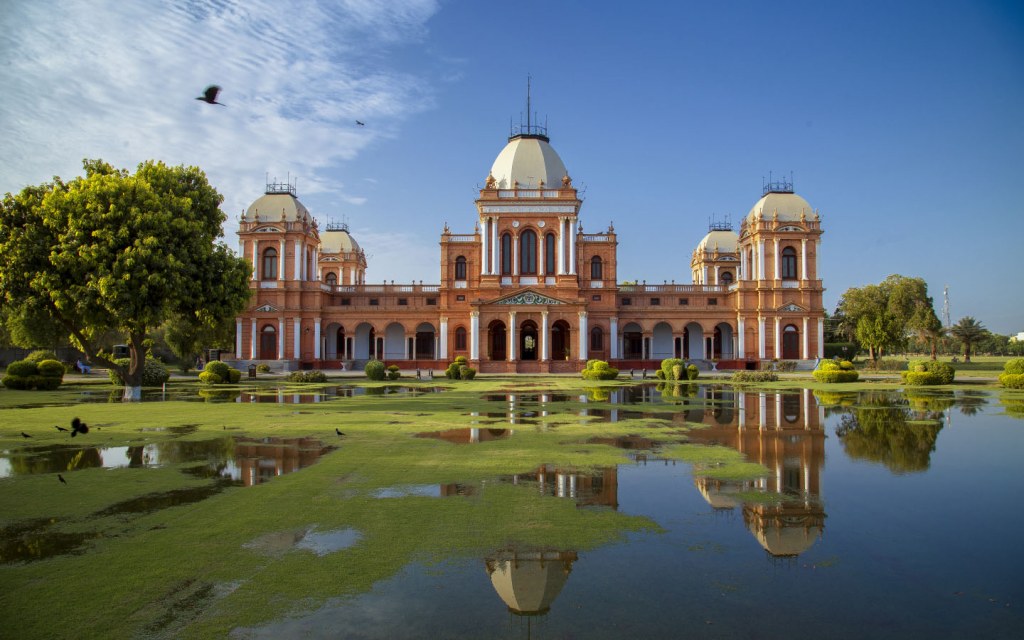
The foundation for Noor Mahal in Bahawalpur was laid in 1872, but it was completed in 1875. At the time, the construction of the captivating structure cost somewhere around RS 1.2 million.
As the story goes, Nawab of Bahawalpur Sir Sadiq Muhammad Khan IV, also known as the ‘Shan Jahan of Bahawalpur’ for his interest in architecture, built Noor Mahal in honour of his wife. However, she refused to live there due to its proximity to the Basti Maluk Graveyard. This double-story palace later served as a guest house for noble families. Friends of the Nawab, as well as dignitaries and other prominent personalities visiting the princely state, also stayed here. Occasionally, Nawab Sir Sadiq Muhammad also used Noor Mahal to hold cabinet meetings or as a State Court.
A British engineer named Mr Heenan is credited for designing the building that has now become one of the most beautiful tourist attractions in Pakistan. The palace was built in the style of an Italian chateau. However, it combined important elements of neoclassical architecture with traditional Islamic design. In fact, most of the materials used in the construction of the palace were imported all the way from England and Italy.
Moreover, some claim the Nawab of Bahawalpur ordered a map of the state along with some gold coins to be buried in the foundation of Noor Mahal Palace to bring good luck.
At the beginning of the 20th century, then-Nawab of Bahawalpur Muhammad Behawal Khan added a mosque to the premises. It was inspired by the design of Aitchison College in Lahore.
After the independent state of Bahawalpur merged with Pakistan in 1965, the Auqaf Department of the government took over the palace. In 1971, the palace was leased to the Pakistan Army, which later purchased it for PKR 119 million.
In 2001, the Government of Pakistan’s Department of Archeology declared Noor Mahal as ‘a protected monument.’ They also opened it for the general public. Being one of the most stunning historical places in Pakistan, this palace has become a rather popular spot for educational field trips and photo shoots in Bahawalpur.
The Architecture of Noor Mahal
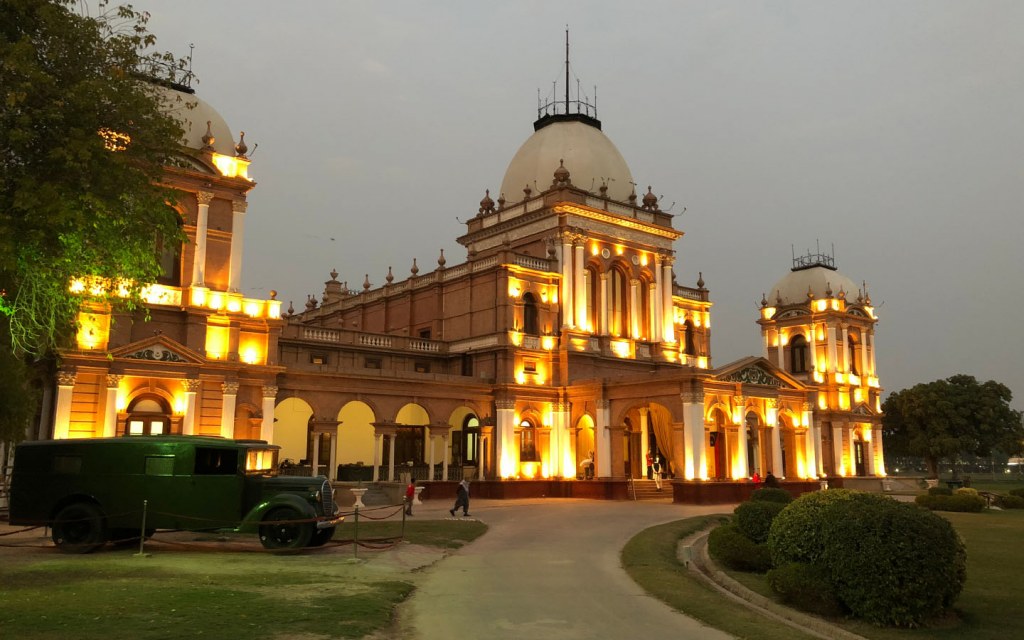
Spread over an area exceeding 8 kanal, Noor Mahal in Bahawalpur is certainly a sight to behold.
The palace has two floors and a basement which comprise a total of 32 rooms, including 14 in the basement. The building also has five domes representing the traditional Islamic architecture in the sub-continent along with wide Corinthian-style columns and pediments. Its location in the middle of a lush green garden with water tanks and fountains has also added to its beauty.
Meanwhile, the interior of the Noor Mahal is just as, if not more so, luxurious than its exterior.
From hand-carved gilded furniture and classic mosaic floors to massive crystal chandeliers and grand pianos, this palace is a testament to the splendour of the royal family of Bahawalpur. Furthermore, most of the artwork displayed on the walls belong to Western artists. But you can easily see a traditional touch in the décor in the form of elegant carpets, high-rise curtains, exquisite ornaments and other fixtures. In a classic fashion, visitors can also see some antique swords and muskets that are displayed on the walls.
While the entire ‘Palace of Lights’ is filled with incredibly beautiful furniture and artwork, the lavish Durbar Hall is certainly the most aesthetically pleasing part of the property. It boasts a high rise ceiling with grand chandeliers and sofas meant for the kings.
The massive libraries in Noor Mahal, as well as the vintage cars, also draw a lot of attention.
The Present
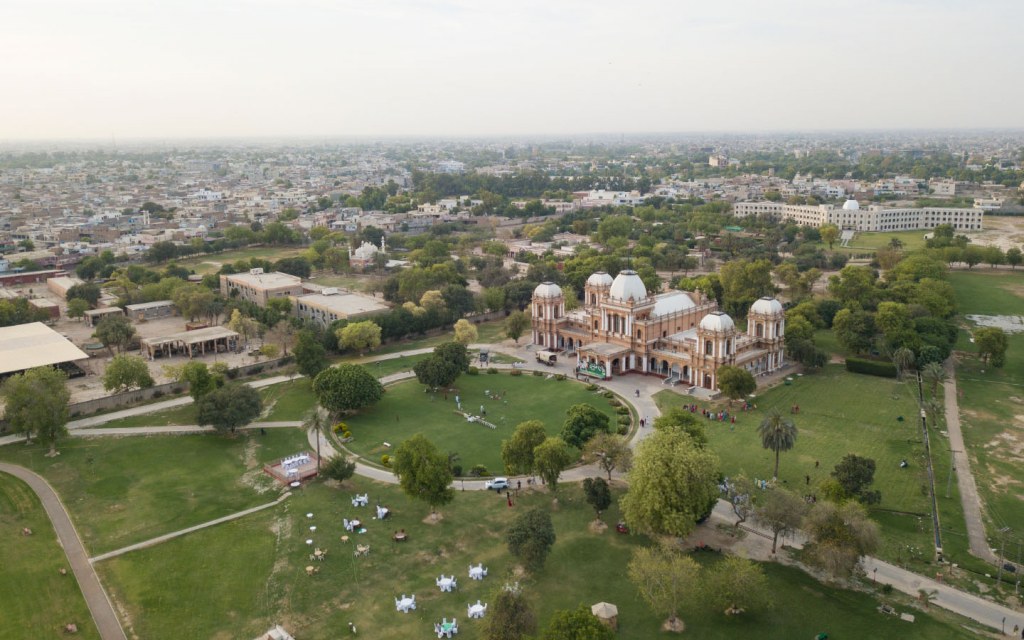
Presently, Noor Mahal serves as one of the most popular tourist attractions in Bahawalpur. While the 19th-century monument looks glorious during day time, its view when the lights are turned on at night is even more spectacular.
The incredible sound and light show at Noor Mahal also draws a lot of visitors from all over the area. It’s usually held on Saturday and Sundays at around 7:30 PM.
Meanwhile, if you ever visit this state-of-the-art palace, make sure to get the services of a local guide for a better understanding of the architecture and historical significance of this monument.
Other Royal Palaces in Bahawalpur
There is no shortage of places to see and things to do in Bahawalpur.
While Noor Mahal may be the most popular and well-maintained palace in the city, it is certainly not the only one.
Some of the famous royal palaces in Bahawalpur include:
Derawar Fort
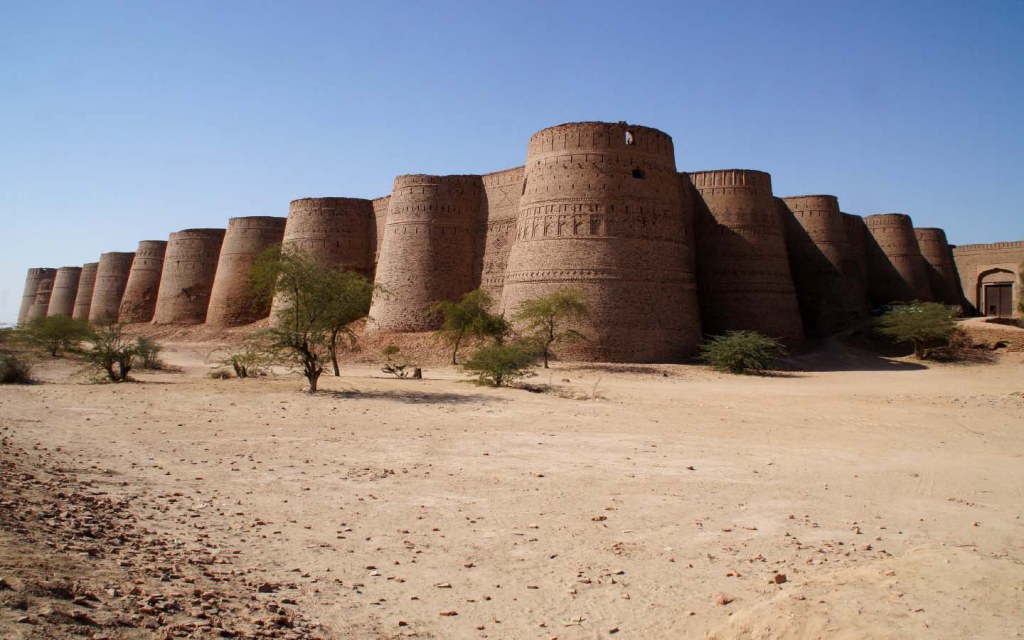
Located in the magnificent Cholistan Desert, Derawar Fort in Bahawalpur is considered one of the most historic forts in Pakistan. The dilapidating red-bricked structure was built as a tribute to the sovereign king of Jaisalmer and Bahawalpur region Rawal Deoraj Bhatti. It was originally constructed in the 9th century. However, Nawab Sadeq Mohammad Khan I took over the fort in 1733 and rebuilt it.
Sadiq Garh Palace
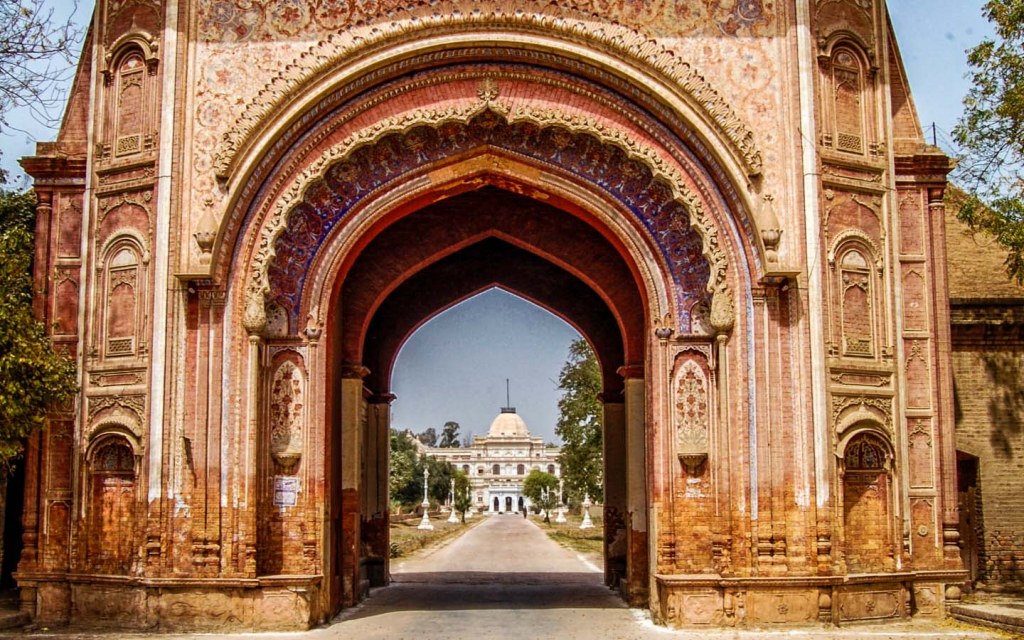
Also known as the White Palace, the historic Sadiq Garh Palace was constructed in 1882. It serves as the royal residence of then-ruler of Bahawalpur, Nawab Sadiq Muhammad Khan. The expansive palace took almost 10 years to be built. However, it has now become a picture of desolation due to its crumbling walls, fading paint and broken windows.
Darbar Mahal
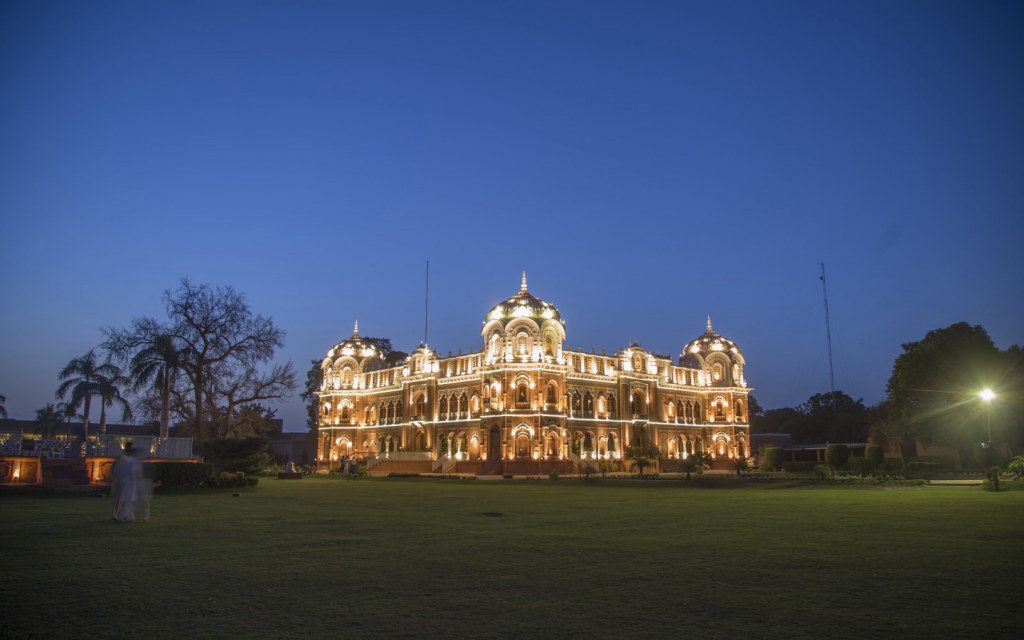
Apart from Noor Mahal, Darbar Mahal is perhaps one of the only well-preserved royal palaces in Bahawalpur telling the story of the affluence of what was once a princely state. Built in 1905, this monument is being used as an office by the Pakistan Army. It is not open to the general public.
Meanwhile, if you have an interest in history and love exploring new places, there are a few incredible UNESCO World Heritage Sites in Pakistan that you can check out this summer apart from Noor Mahal Bahawalpur.
To learn more about the historic tourist attractions in the country, head over to Zameen Blog – your top source for all lifestyle-related matters in Pakistan.
